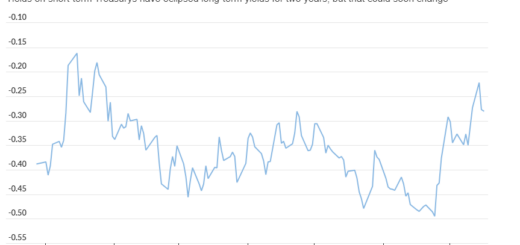Breaking News: Wall Street Economist Forecasts a ‘Rolling Expansion’ Amidst Economic Recovery”
A famous economist in the financial district of New York foresees a shift from the current economic decline to a period of expansion. This indicates that the stock market could potentially see a surge in 2023. Additionally, it is anticipated that this surge will not be limited to major technology companies, but will also impact various other industries during the later part of the year.
In a phone interview on Friday, Ed Yardeni, president of Yardeni Research, explained the significance of examining industries and sectors that have been declining in order to ascertain whether there is ongoing economic growth. He pointed out that these particular areas are now showing signs of revival.
Yardeni pointed out the impact on the housing industry. Last year, the increase in mortgage rates caused a decrease in the sales of single-family homes. However, the sector has bounced back as homeowners have been unwilling to sell, leading to a limited supply. The pent-up demand has kept the sector strong, including home builders, despite mortgage rates approaching 7%. As a result, there seems to be a shift in focus towards the manufacturing sector, as per Yardeni. Retailers have made progress in reducing their excessive inventories that were accumulated in late 2022 and early 2023 due to over-ordering during supply-chain disruptions. Yardeni predicts that upcoming purchasing managers index readings will soon indicate signs of improvement.

According to Yardeni’s predictions, not all sectors of the economy will thrive, but commercial real estate, particularly old office buildings, will experience a major decline.
He declared that industries like malls, hotels, and warehouses will not witness substantial growth, but they will not decrease in size either.
Yardeni suggests that the current state of affairs enables the economy to continue at a moderate speed, avoiding a recession. The National Bureau of Economic Research defines a recession as a substantial and lengthy drop in economic activity that impacts various sectors of the economy.
Investor attitudes towards a potential recession in 2023 have been inconsistent. Anxiety grew after the collapse of Silicon Valley Bank and other nearby lenders in March, raising concerns about a credit crunch that could accelerate the economy’s decline into a recession. This unease was further amplified by the delayed effects of the Federal Reserve’s consecutive interest rate increases, which began in March 2022.
The job market, although it’s not as chaotic as before, remains strong compared to past times, and combined with consistent consumer spending, it is reducing worries about an upcoming economic decline. Specialists argue that the decreasing concerns of a downturn have played a part in the current surge of the stock market in 2023, leading to a substantial 16% rise in the S&P 500 during the first six months.
Consumers still possess substantial financial means, as highlighted by Yardeni. He underlined that interest income, dividend income, rental income, and proprietors income are currently experiencing record highs. Furthermore, Yardeni noted that Social Security payments have also reached unprecedented levels.
On the other hand, Yardeni previously claimed that the economy went through the mentioned repetitive decline, but now he thinks it is entering a phase of repeated expansion.
There is worry that the Federal Reserve may need to further increase interest rates beyond what investors and policymakers expect. An expert suggests that most of the inflation rise is due to the pandemic’s impact, implying that a recession is not required for inflation to decrease. In fact, there are signs of decreasing inflation, such as a near-zero inflation for goods, negative inflation for durable goods, and significant price drops for non-durable products like food and energy. However, inflation persists in the services sector.
It is anticipated that in the latter half of 2023, there will be a gradual expansion of the stock market‘s rally, resulting in a broader and more varied growth. Up until now, the market has primarily experienced advancements in major technology stocks, where only a small number of them (referred to as the “magnificent seven”) have substantially contributed to the overall gains of the S&P 500 index.
Many stocks have actually underperformed. An indicator of the S&P 500 known as equalweight, which gives equal significance to each component rather than considering market value, only had a 6% growth in the initial half-year. The Dow Jones Industrial Average, which concentrates more on cyclical industries, experienced a mere 3.8% increase.
Yardeni noted that it is evident that the cost of leaders is increasing.
Nevertheless, artificial intelligence is instigating a new surge of industrial evolution that is currently unraveling. In his perspective, investors will display eagerness towards firms that are not directly engaged in inventing technology, but rather are leveraging it to improve their efficiency.




